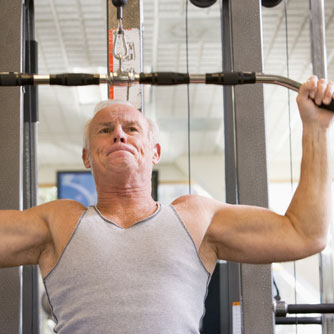Researchers find mechanism behind age-related muscle loss as well as curee
 Washington, August 03 : Researchers at Columbia University Medical Center have discovered the biological mechanism behind age-related loss of muscle strength, and also identified a drug that may help reverse this process.
Washington, August 03 : Researchers at Columbia University Medical Center have discovered the biological mechanism behind age-related loss of muscle strength, and also identified a drug that may help reverse this process.
As we grow older, our skeletal muscles tend to wither and weaken, a phenomenon known as sarcopenia. Sarcopenia, which begins to appear at around age 40 and accelerates after 75, is a major cause of disability in the elderly. Exercise can help counter the effects of age-related muscle loss. Otherwise, there are no established treatments.
According to the new study, conducted in mice, sarcopenia occurs when calcium leaks from a group of proteins in muscle cells called the ryanodine receptor channel complex. These leaks then trigger a chain of events that ultimately limits the ability of muscle fibers to contract, reported study leader Andrew R. Marks, M. D., chairman and professor of physiology and cellular biophysics, the Clyde and Helen Wu Professor of Medicine, and director of the Wu Center for Molecular Cardiology at Columbia University Medical Center (CUMC).
Since muscular dystrophy and sarcopenia have some commonalities, Marks suspected that ryanodine receptor leakage might also be involved in age-related muscle loss, which the present study shows is the case.
"This is a completely new concept - that the damage that occurs in aging is very similar to what happens in muscular dystrophy," said Marks, "thus as we age we essentially develop an acquired form of muscular dystrophy."
The study also points to a possible therapy for sarcopenia: an experimental drug called S107, developed by Marks and his colleagues. The drug acts by stabilizing calstabin1, a protein that binds to ryanodine receptors and prevents calcium leakage.
The study has been detailed in the online edition of Cell Metabolism. (ANI)